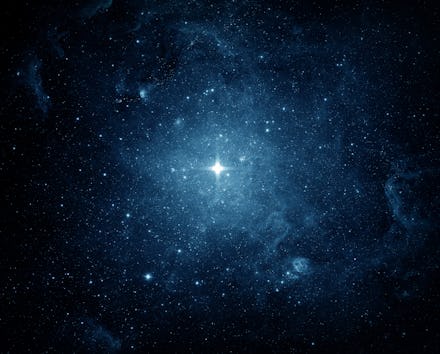Scientists think these stars could hold the key to finding alien life

Our search for terrestrial life among the stars feels like it's never-ending. We've been tirelessly scanning the skies for signs of intelligent life through the universe as far back as we can remember. Unfortunately, we haven't actually found anything just yet – but that could very well be because we're simply looking in the wrong place. Instead of scouring the moon, or even places like Mars, it's highly probable that, we should have been searching locations like the white dwarf stars scattered throughout the universe instead. Though they seem like a most unlikely spot for life to thrive, it's highly possible that this should be where we direct our attention in the future — at least, if we want our search to be fruitful.
White dwarfs are essentially what massive stars like our solar system's own sun turn into at the end of their lives. They're the byproduct of smaller, dense stars with remnants of cores approximately the size of planets. With that logic in mind, perhaps we should be focusing our search, according to SUNY Stony Brook's Paul M. Sutter, around white dwarfs — it's highly probable the remnants of life of some type could indeed be found there, if anywhere in our wide universe. Essentially, this all means that we could potentially find planets similar to Earth there, which we could end up needing to utilize in the far-off future.
After decades of fruitless scouring space for something, any sign that we aren't alone, this may be the turning point for a major discovery. And while we aren't so sure what alien life might actually look like if we do set out to find it, we know the process that may have brought it into existence might look a little bit like what happened with Earth.
The type of life that grew on Earth initially grew on the surface thanks to an atmosphere that supports life with plenty of water to go around. White dwarf stars, even though they're essentially the remnants of stars that once burned brightly, were previously large, majestic bodies. After they've died, they'll begin the trillion-year-long cooling process and continue orbiting.
A cooled white dwarf, however, may very well house the kind of conditions we're looking for when it comes to finding a new planet when the time eventually comes that humanity needs to seek out a new home — and that time will arrive, just not in our lifetimes. White dwarfs are plentiful, as they make up around 15% of all the stars in the universe. This means they likely once hosted planets similar in scope and features to Earth — meaning we'll have found exactly what we were looking for: habitable planets.
But the search for white dwarfs hasn't exactly been ongoing — it's only really just begun as of late. With our eyes to the skies, however, it's time to really take stock of what's going on around us, and see if a white dwarf really is the best place to seek out intelligence, or at the very least if conditions on or around these celestial bodies line up with what we believe to be conducive to life.
We've got a few dozens of decades to look back on in terms of missed connections. Hopefully one hits soon enough, because it's starting to feel lonely out there in space.